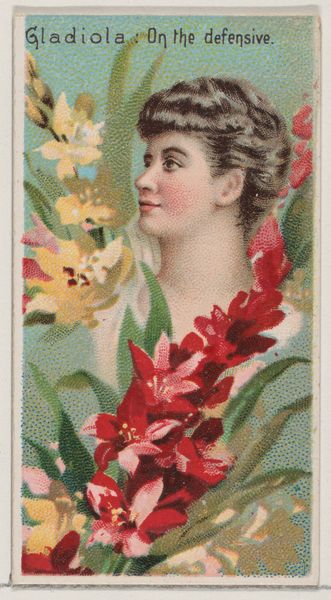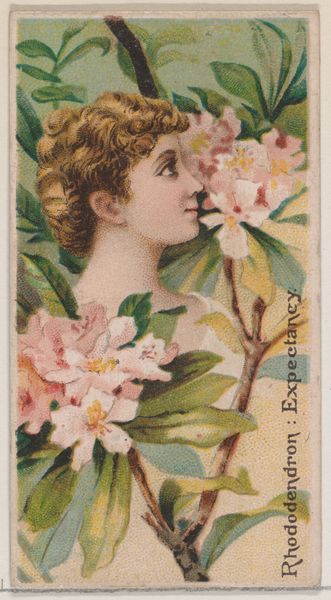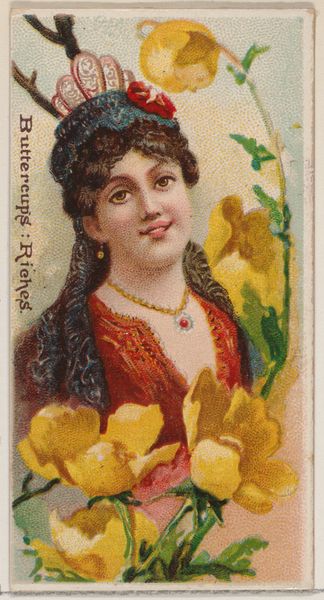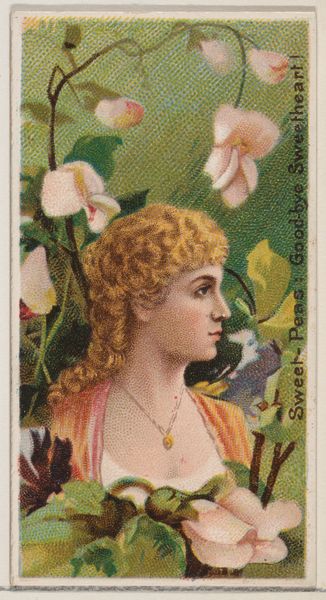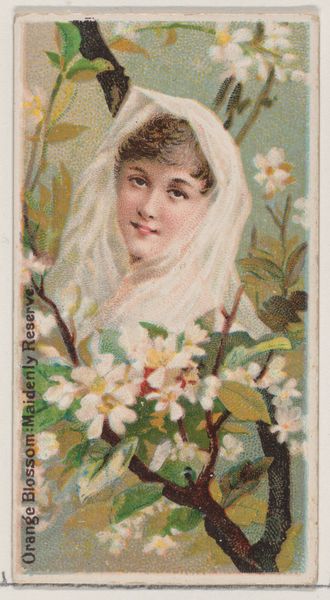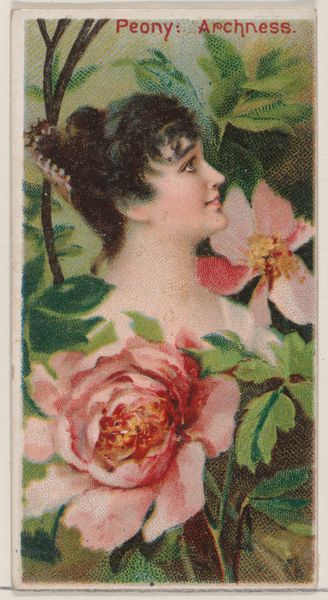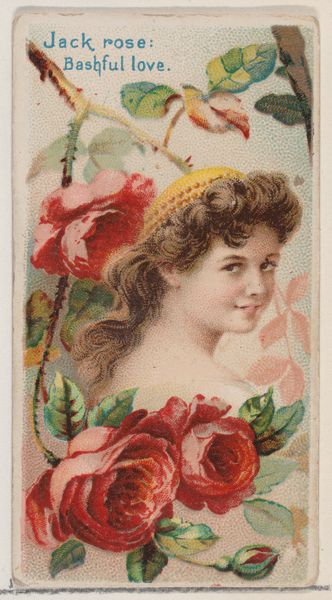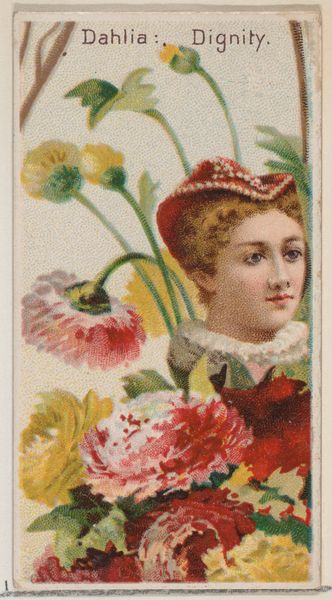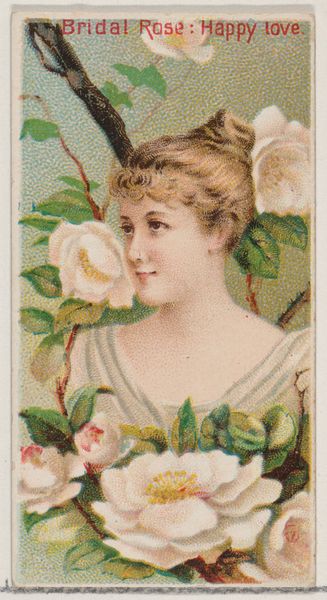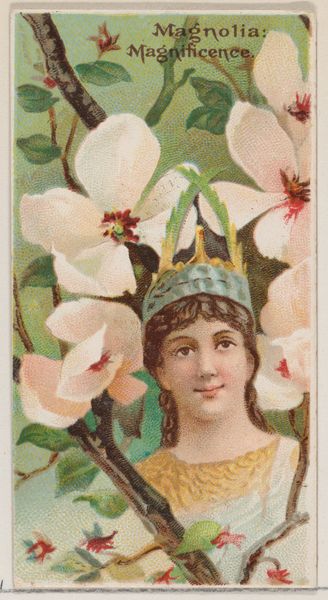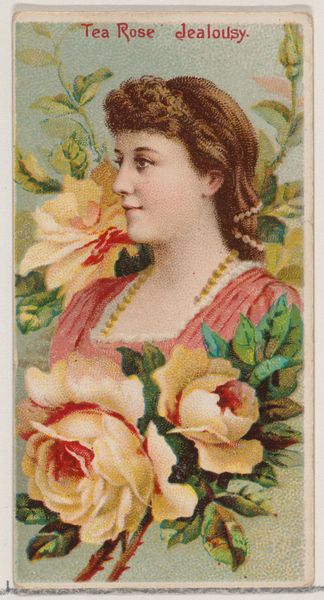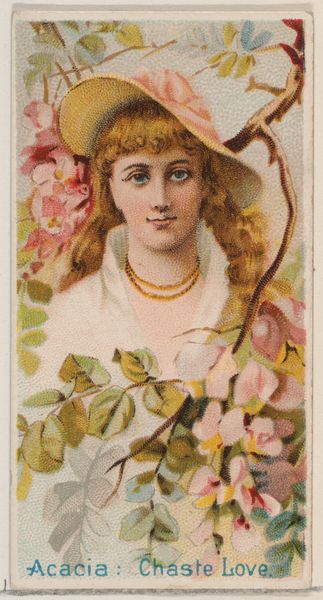
Azalea: Attraction, from the series Floral Beauties and Language of Flowers (N75) for Duke brand cigarettes 1892
0:00
0:00
Dimensions: Sheet: 2 3/4 × 1 1/2 in. (7 × 3.8 cm)
Copyright: Public Domain
Editor: This is a very pretty watercolor print from 1892 called "Azalea: Attraction." It's part of the series "Floral Beauties and Language of Flowers" made for Duke brand cigarettes. I’m immediately struck by its Romantic style and the way the flowers seem to embrace the central figure. It feels delicate, almost ethereal. How would you interpret this work, looking beyond just the surface? Curator: Certainly. A formalist reading invites us to consider the relationships of form and structure as primary drivers of meaning. Observe how the artist employs a limited palette, focusing primarily on variations of red, pink, and green, creating a sense of visual harmony but also a flattened picture plane. Note too the composition; the figure and floral elements are intertwined, almost symbiotic. How does this interweaving contribute to the overall feeling you described? Editor: I see it. The lack of strong contrast and the soft edges make everything blend together, giving it that dreamy quality. But the flatness…is that intentional, to emphasize the surface of the print itself? Curator: Precisely. The artist deliberately avoids creating deep spatial recession, calling attention to the materiality of the artwork as an object. Furthermore, the repetition of floral motifs and the mirroring of curves in both the figure’s hair and the petals of the flowers suggest a structural unity. How might we interpret this emphasis on unity within the formal elements of the composition? Editor: So, it’s less about what the azalea represents symbolically and more about how the artist uses color and form to create a unified aesthetic experience. It's interesting how those formal decisions create such an impact. Thanks! Curator: Indeed. By engaging in a formalist reading, we gain insight into the artist’s intentional choices and the ways in which these choices shape our understanding of the artwork's meaning. An investigation of the elements and principles shows us that beauty relies on far more than mere representation.
Comments
No comments
Be the first to comment and join the conversation on the ultimate creative platform.
